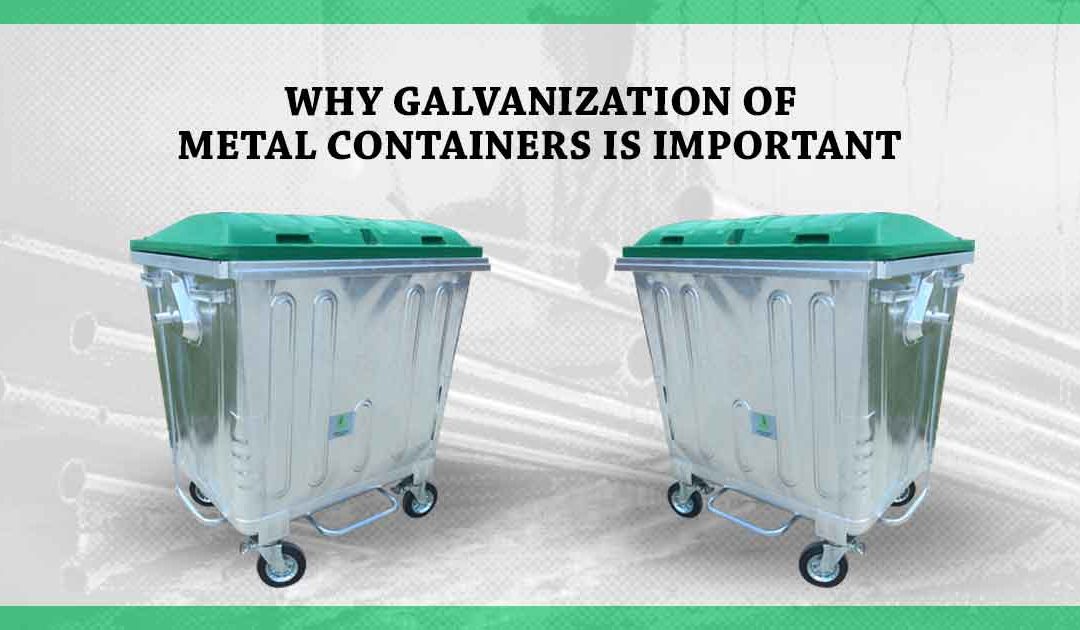When waste containers are in question, there are many ways to describe them: metal waste containers, steel waste bins, galvanized bins, steel waste bins, hot dip galvanized waste containers, and many, many more. At first glance, they all seem the same, but those are different container types based on their manufacture mode. Read on to learn more on the galvanization process and its importance in waste containers production.
What is galvanization?
Both iron and steel are corrosive metals if not protected properly. They tend to develop rust resulting from exposure to the elements, and the rust level largely depends on the environment the product is placed in.
Galvanization is known to protect corrosive surfaces from damage. It is a chemical process in which protective zinc coating is applied to iron or steel surfaces to prevent them from premature corrosion and rust.
One of the best galvanization methods is hot-dip galvanization, in which all metal surfaces are dipped into molten zinc, hence completely covered with a layer of zinc melted in temperature so high to make it hot thick liquid.
Zinc is used because it is very resistant to corrosion, hence covering metal with it extends its life and protects the base metal. Further process of galvanization entails alloying zinc to the iron, hence causing cathodic protection, in which steel exposed to such damage becomes more resistant to rust – similarly to vaccination in people and animals. This way, cathodic protection lasts as long as there is the zinc layer on the object surface.
Are there any alternatives?
Galvanization is not the only method to protect corrosive surfaces from rusting. Other methods to protect metal and brass objects were in use long before galvanization was invented.
Some of them were painting and plastic coating, and, although still in use today, they both have disadvantages: they are temporary and unreliable. When steel objects are damaged, its sections develop rust, while plastic coating may fall off and cause further damage. That is why both painting and plastic coating need continued maintenance.
Benefits of galvanization
Galvanization became a popular metal protection method due to many benefits it holds.
First of all, when it comes to costs, galvanization is lower in cost than stainless. In the long run, it requires less maintenance and prolongs the lifecycle of galvanized objects.
Secondly, when it comes to performance, galvanization provides reliable coating life and outstanding resistance to atmospheric conditions and mechanical damage. This is achieved without compromising the base metal quality or performance.
Thirdly, galvanization is the only method which protects small sections of steel exposed through damage.
And, last but not least, with galvanization, no time is lost in surface preparation, inspection and painting, unlike painting and plastic coating, which require special surface preparation prior to protection process.
All these aspects make galvanization the best option for protecting any metal object from exposure to the elements and mechanical damage, which is particularly important in waste containers production.
Galvanization drawbacks
Galvanization works perfectly fine with objects that require no special maintenance, such as waste containers, or that should be resistant to mechanical stress. Other than that, any contact of food with galvanized cookware or kitchen utensils is not advisable, as it can lead to zinc poisoning and food going bad.
That is why storing or preparing food in metal and galvanized objects should be avoided at all cost. Namely, in nitrate-rich foods, such as cured meats, smoked meats, ham and cooked sausages, in which nitrate is used for preservation along with salt, contact with galvanized metal creates a chemical reaction of releasing zinc and resulting in oxidization, hence corrosion. Some fresh fruits contain sulphur dioxide which preserves them longer but causes the same reaction in contact with metal.
To prevent any instances of such chemical reactions, not even raw food should come into contact with galvanized cookware or utensils.
 Galvanization of metal waste containers
Galvanization of metal waste containers
It comes as a logical conclusion that galvanization of metal waste containers is the best way to protect them and provide for their long life.
Whether it is 660-1100 L steel bins, more voluminous waste containers, outdoor cleaning trolleys or steel litter bins; whether it is metal or steel waste containers or refuse bins; whether for household or communal use; when purchasing waste containers for outdoor use pay particular attention to the manufacturer’s data on the material and the production process.
The best waste containers should be made of either high quality deep pressed sheet steel or steel plates, and be either galvanized or hot dip galvanized, to ensure maximum protection against corrosion or damage caused by the elements.
Secondly, due to galvanization benefits such as atmospheric conditions withstanding, galvanized waste containers are suitable for outdoor use. There is no fear of premature rust or corrosion, even if damaged or scratched.
Furthermore, galvanization zinc coating makes such waste containers easy to maintain and imperfections-free. In other treatment methods, such imperfections may include ash, flux, bulky white deposits or black spots, dross inclusions, pimples rust strains, etc. but in galvanization the surface remains reasonably smooth.
To summarize, galvanization is one of the numerous metal protection processes, yet the only one with long-lasting results. Galvanization holds many benefits, some of which are waste containers long lifespan, resistance to the elements, easy maintenance, total protection, reliability and permanence.
When looking for quality waste containers, no matter their volume or manufacturer, look for hot dip galvanized steel containers. They will surely give you the best run for your money and stand the test of time and the elements.


Recent Comments